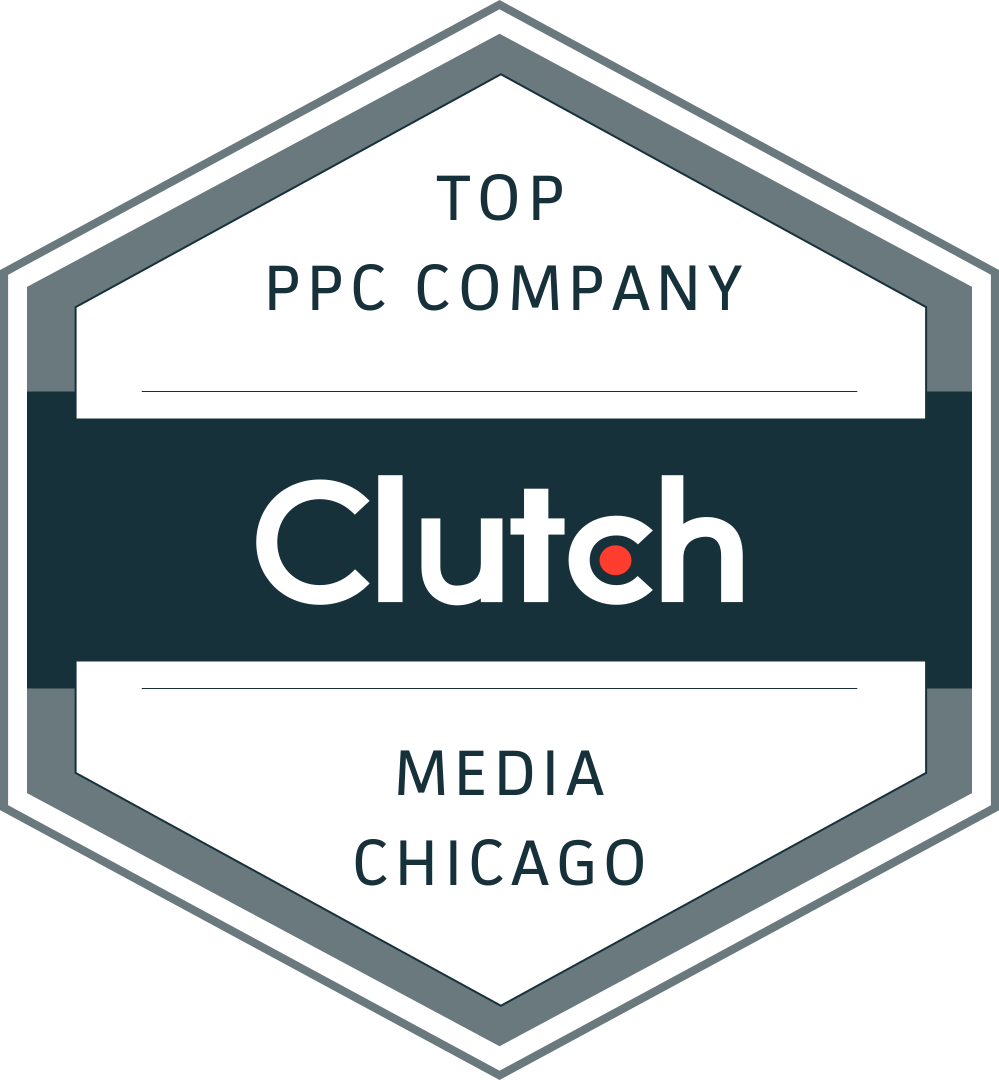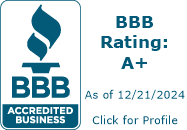There are countless people who are active in the digital space. Whether it be through social media posts, blogging, creating videos or podcasts, or regular email newsletters, there’s always that one burning question that seems to come up in regularity – how do these people make any money through their efforts?
Everyone has a favorite website or blog they frequent. All that great content keeps bringing you back, but how does this website or blog continue to produce all that great content without me ever buying something from them or paying for a subscription to access their helpful product reviews and comparisons or timely newsletters sharing the latest deals online? The answer more times than not is they are using affiliate marketing to fund their efforts.
What is Affiliate Marketing?
The affiliate marketing industry is a behemoth, generating billions of dollars every year for thousands of online merchants. Not only that, but the affiliate marketing industry is on an impressive growth trajectory that is cruising towards over $8 billion in the U.S. by 2022. Wouldn’t you like to snag a little piece of those billions for yourself?
Well sure, we all would like a piece of that pie, but how? How do I get started in affiliate marketing? How does it work? How much does it cost to get started?
The short answer is — it’s quick and easy to get started, and you can do it with very little upfront investment. Our guide will walk you through how affiliate marketing works, how much money you can potentially make, and the main things to set up to get started quickly and cheaply.
How does Affiliate Marketing Work?
Online merchants love the affiliate channel because they can grow a virtual sales force by providing commissions to affiliates for leads and sales they drive on their behalf. Because an affiliate does not get paid until a lead or transaction occurs, merchants can maintain a profitable performance-based channel while focusing on other labor-intensive channels or important business priorities. For the affiliate, this allows you to promote and sell products and services from all the top brands in the world without having to buy inventory or pay for licensing rights. It’s a win/win for both sides if done correctly.
Getting Credit for Leads and Sales
When an affiliate joins an affiliate program, the merchant will provide the affiliate marketer a unique link that has code in it that identifies the affiliate and any activity that occurred from the link. When someone clicks the link, a small file called a cookie gets stored on their computer or device. That cookie tells the merchant a few things such as what affiliate in their program produced the click that ultimately lead to a sale and when the click happened.
If you place a link in your website content or email newsletter and one of your visitors click on it and buy a product or service you are promoting within a given timeframe (7 days, 30 days, 60 days, etc), the merchant will see you sent the click to them and what product was purchased. They now know they owe you a percentage of that sale or a flat commission amount for a lead.
How Much Money Can I Make as an Affiliate Marketer?
The short answer to this question is you can make as much money as you choose to make – it all depends on how much time and energy you put into it. Revenue potential depends on what niche or products you decide to promote. To give you an idea of what successful affiliate marketers make, many of them are generating up to seven figures a month.
For example, when I started in affiliate marketing, I focused my energy on programs and brands that allowed me to run paid media campaigns. Doing this, I was able to ramp up my earnings quickly because I didn’t have to wait for my SEO strategies to mature over the course of several months. I could simply set up campaigns in Google Ads and run traffic to niche websites highlighting and promoting different sets of products and services. The more popular the brands were, the more interest and market share there was to get my hands on. Some of my most profitable and revenue-producing campaigns were in the travel and hospitality industries.
My favorite program was my partnership with Choice Hotels, a chain of multiple hotel brands from roadside interstate hotels up to large luxury resorts in some of the top travel destinations in the world.
Because of the relationship I developed with the Affiliate Manager, I could run compliant paid search campaigns to each brand. Because I was part of the Choice Hotels Affiliate Program, I could promote as many as 8 well-known brands like Cambria Hotels, Comfort Inn, Quality Inn, Mainstay Suites, EconoLodge, and Rodeway Inn. I developed content on my niche travel site for all of these brands and ran traffic to each brand page and drove bookings for these hotels. At the height of my efforts, I was spending upwards of $50 – $75K a month in paid search spend and generated over $150K a month in commission for myself. It was a great example of a fruitful partnership between my company and Choice Hotels.
On top of that, I also had other hotel brands on my niche travel site, so although I was driving traffic through Choice Hotel searches, I also managed to drive supplemental commission through other programs with Hilton Hotels, Hyatt Hotels, Marriott Hotels, Sandals Resorts, and other well-known hotel brands. I carved a niche out for myself that continued to pay out large affiliate commissions month after month.
But, it didn’t happen overnight. I had to hunt for good programs with healthy commission rates, establish relationships with the Affiliate Managers, build out content that was up to their brand specifications, and invest in upfront paid media spend. Also, with hospitality programs, I was only able to collect my commissions after the guest stayed at the property and paid for their stay, so sometimes I would pay for a click months before I ever saw the fruits of my labor – it was a long game, but a highly profitable one.
How to Get Started in Affiliate Marketing
It’s easy to get started in affiliate marketing. It only takes a few simple steps to be up and running. Here’s a quick breakdown of the steps to follow:
- Choose your marketing platform
- Choose your affiliate network
- Choose your niche to promote
- Research affiliate programs that align with your niche
- Build content around your niche
- Drive traffic to your new website or blog
- Generate clicks to your new affiliate partners’ websites
- Convert those clicks into sales and leads
- GET PAID & REPEAT
Step 1 – Choose your marketing platform
There are multiple channels and platforms you can leverage as your traffic source. Two easy and cheap platforms to leverage is a blog or a YouTube channel. You can start a blog for just a couple of bucks a month and you can launch with just a few informational posts that include affiliate links from your chosen programs.
Once you start creating your content, make sure you are also optimizing that content for search engines (this is called SEO, or Search Engine Optimization). Once you start ranking for keywords you have targeted, you can continue to build out additional content promoting specific brands or sets of products.
Over time you can start ranking in the search engines for searches that are transactional in nature. For example, if you are building a blog that focuses on hotel brands and destinations, you might focus your content on searches like “best hotels for kids in Miami” or “Hilton Hotels in downtown Miami with a pool” to pull traffic from people looking for the best places to stay in Miami that offer specific amenities. You can use free tools like AnswerthePublic.com or Google Trends to see what people are actually searching for.
Your content could be a list of different brands in the Miami area that also have amenities people are looking for (ex. A hotel with a pool, private beach, or 4-star restaurant), or you could focus on brands that provide the best commission (each program is different in the amount they are willing to pay for a booking from your links). The combinations are endless.
Once a searcher finds your blog in the search engines, make sure to provide useful, informative content. Top 10 lists, comparisons, reviews, or a directory of specific local hotels can be useful for potential hotel guests as they do their research before their trip. Always provide value to help them make their decision on where they want to stay. Within your content, you will strategically place affiliate links that point to those brands or specific properties so your visitor can move along with their booking. Once they stay, you will be paid your commission.
Pro Tip: Top affiliate marketers leverage multiple platforms and channels to maximize their reach. For example, some will build a website, a blog, multiple social media pages, a YouTube channel, and email newsletters to create an omnichannel experience that all feed into each other. This allows them to be present across the entire online landscape.
Step 2 – Choose your affiliate network
There are many affiliate networks you can work through but focusing on the top 2 or 3 will provide plenty of programs to get started. The most popular affiliate networks include:
ShareASale is a great place to start. Their network has hundreds of programs to apply to and the interface is very easy to use.
You can be up and running in 5 steps. Once you are logged in, you can start applying to programs that match your niche. ShareASale has programs organized by different industries, which makes it quick and easy to get started.
The CJ Affiliate Network is one of the largest networks with many of the most popular online brands.
The CJ Affiliate Network was one of the main networks I used when I was an affiliate marketer. They have many tools and resources for affiliates to use including custom widgets you can place on your website or blog and even call tracking tools. The largest brands are available so you’ll be covered with a variety of options and industries.
ClickBank is a unique network that offers many SaaS companies and software you can sell to your audience. The other great thing about ClickBank is once you sign-up, you automatically are able to promote any programs in the network without having to apply to each individual program.
In the words of ClickBank…
“So, you’re ready to Make Bank? You’ve come to the right place. Whether you’re looking to simply add to your income, take that dream vacation, or quit your day job and make it big, ClickBank’s tools have you covered.”
ClickBank offers its affiliate marketers thousands of digital products to choose from so this affiliate network is great for tech bloggers. On top of that, many of the products hosted on ClickBank offer a money-back guarantee which helps with buyer confidence and trust. They offer a range of reporting tools so you get a deep understanding of what’s working and what’s not.
Rakuten Advertising network is another established network to work with. Originally named Linkshare, Rakuten Advertising has many B2B products and services to partner with.
Rakuten Advertising also has a great international reach of over 200 countries, so if your niche caters to an international audience, Rakuten is a great network to sign-up to.
Just like the other affiliate networks mentioned in this guide, Rakuten provides their affiliate marketers with text links, banners, search boxes, and capabilities to deep-link to specific product pages of the brands you are actively marketing. Rakuten also offers product feeds to affiliate marketers so they can build websites with an e-commerce feel. These feeds ensure your prices are always up-to-date, and you don’t have to manually create product titles and descriptions as the feed automatically populates these fields within your content.
Pro Tip: Join multiple affiliate networks. You will oftentimes see the same brand in more than one network and they may have different commission levels. This allows you to take advantage of the best commission available.
Step 3 – Choose your niche
Choosing a niche is pivotal to your success as an affiliate marketer. When thinking about what industry to focus on, it’s always a good idea to start with topics and subject matter you are familiar with or you enjoy learning about. Another important part of choosing the right niche is to make sure it’s a niche you can profit from. There is no shortage of niches to get involved in, so start by thinking about what you have a passion for. One source of inspiration might be hobbies you are already involved in. Maybe you enjoy cooking or traveling? Perhaps you like to get under the hood and work on your classic car in the garage? You can create content around just about anything, so writing and creating content around a hobby of yours can make the process more enjoyable for you. In addition, you have a level of expertise in these subjects already, which will shine through in the content you share. You will also save many hours of time researching and learning about a new niche.
Pro Tip: If you have multiple hobbies and interests, think about which ones align with the highest price point products and services or have the highest interest. You might as well earn as much as possible with your efforts.
Step 4 – Research affiliate programs that align with your niche
Now that you have your niche figured out, it’s time to go shopping for affiliate programs that work under that umbrella. So for example, if you have a passion for traveling, you can look for programs for hotels, resorts, cruises, airlines, tours, and activities. You could also promote products you need when traveling like outdoor gear, clothes, accessories, travel-friendly devices, or luggage.
One big thing to keep in mind is your commission structure. How much of a sale are you going to keep? Commission structures vary widely, so you might prefer a brand personally, but another competitor brand may have a better commission structure. If all things are equal in terms of quality and demand for those brands, you would opt for the one paying you a higher commission rate.
The affiliate networks often will group the programs into buckets, so researching potential programs isn’t as hard as you might think. Also, most networks rate the programs by revenue generated by affiliates, so you can quickly gauge which programs are more active or are more successful.
Pro Tip: Keep a lookout for new affiliate programs as they won’t have as much competition due to fewer affiliates actively promoting their brand. You can gain an early foothold and establish your partnership when the program needs revenue the most. Building trust with Affiliate Program Managers can open up higher commissions and more flexibility in what you are allowed to do in various marketing channels. The most successful affiliate marketers understand this and take advantage of these relationships more than you know!
Step 5 – Build content around your new niche
Now that you have your niche identified and have applied to your affiliate programs in your top affiliate networks with the best commissions available in the space, you’re ready to build your money-making machine. This is where your creativity comes into play.
The easiest way to get started is through blog posts where you can review products or services within your niche. Let’s take the travel example again – maybe you want to focus on hotels in tropical locations and use links from well-known hotel brands as your subject matter. You could simply write a review of the top five or ten hotels in Hawaii. You could highlight each hotels’ amenities, their proximity to local attractions or tours, and price points. The more information you give on each hotel, the more SEO value you can provide for the search engines to crawl. Make sure the content is unique, helpful, and compelling. NEVER just cut and paste other people’s content and use it as your own. It’s not only dishonest, but it’ll get you penalized in the search engines.
If you are a part of a well-run affiliate program, the brand will provide you with all sorts of great creative in the form of banners, text links, booking widgets, and maybe even price feeds. Use these tools to create a dynamic and accurate experience for your website visitor. These tools are easy to implement and can really help boost the overall look and feel of your website or blog.
Now that you’ve created your first post, continue to add additional content that is relevant to your niche, and that provides helpful information to your users.
Pro Tip: Add a sign-up form to your blog to collect email addresses. You can then share more information through a monthly or weekly newsletter and stack sales from these multiple touchpoints back to those original visitors. This is a way to scale your earnings and expand into additional programs!
Step 6 – Drive traffic to your blog or website
You have your blog or website with all the great content you’ve created, and you’re starting to see sales trickling in. How do you ramp-up into huge sales numbers? It’s time to think about driving more traffic to your pages and posts.
A popular way to quickly ramp-up your traffic is through paid media, specifically paid search. You’ll get free traffic from your content as search engines start to trust you as a good source of information, but that’s a long game. It can take several months to rank high enough to bring significant traffic to your website and individual pages. If you see sales coming from the small amount of traffic you’re getting, chances are you can send paid traffic to those same pages and multiply those conversions.
Use your website analytics (most marketers use Google Analytics) to see what keywords are driving those visits and use those as a guide to build out paid search campaigns in Google Ads. Allocate a small budget to spend in Google Ads and drive even more of the same traffic to your site. If you play it right, your early commissions will pay for your ad spend budget. As you continue to receive more commissions, you can gradually increase that budget.
Pro Tip: As a rule of thumb, for every $2 you get in commission, consider reinvesting $1 into your paid media efforts. This will hopefully provide you with a 1:1 return on investment (ROI) where every dollar spent will provide you with a dollar of profit ($2 commission minus $1 of media spend = $1 of profit). Many times you can achieve even better ROI ratios.
Step 7 – Generate clicks to your new affiliate partners’ websites
This step goes hand-in-hand with step 6. You not only need to drive traffic to YOUR site but make sure people are clicking through your affiliate links to complete their purchase. A clean, easy-to-navigate website is key here. Make sure you highlight your calls-to-action (CTAs) and make it as easy as possible for your visitors to take the next step – jumping from your website and visiting your partner’s website to complete the transaction. Without effectively doing this, you’ll be wasting your time as an affiliate marketer.
Clear CTAs include using buttons and creative that encourage your visitor to click through and complete their transaction. Using buttons that say “Buy Now” or “Learn More” works well. You can also help the process by showcasing offers and coupon codes if they’re available. Affiliate marketing is all about transactions: make it as smooth as possible for your visitors to make a purchase.
Pro Tip: Make sure to position your email submission form for your newsletter at the top of your page (known as above the fold). This way you capture that visitor so you can continue to promote additional offers and products to them. You will be able to enjoy multiple transactions from that visitor without paying for another click!
Step 8 – Convert those clicks into sales and leads
If you send your visitor to the right place on your partner’s site, you will have a higher chance to convert the sale. Most people will simply send a visitor to the home page of the partner’s website, but those pages aren’t typically the best at converting a sale. If a visitor has to navigate deeper into your partner’s site, it will be harder for them to convert. You even run the risk of them losing interest and navigating away from the site altogether (this is called a “bounce”). Instead, utilize a deep link that sends your visitor straight to the product page for the maximum conversion potential. Major brands spend countless time and money optimizing their product pages because they know that’s where the magic happens. All you have to do is help your visitor along to those optimized pages.
Pro Tip: When it comes to the number of clicks to make a purchase, the rule of thumb is for every extra click in that path, you HALF your conversion rate. By sending visitors straight to where they can look at the product they want and hit ‘BUY NOW’, you’ve done yourself a huge favor and saved yourself the need for more traffic. In this scenario, 10 clicks to a deep-linked product page will bring you the same amount of commission as 20 or more clicks from sending them to the homepage.
Step 9 – GET PAID & REPEAT
This step is pretty straight forward. Once you’ve figured out how to make money with your first niche blog, simply choose another niche to cover and do it all over again! Once you have three or four properties you are actively managing, you can really start to scale your earnings.
Pro Tip: Many of the top affiliate marketers make big money because they scale what works by managing multiple websites. For example, at the height of my affiliate career, I was managing over 40 websites in over a dozen industries and was generating six figures a month in profit – all by myself!
Summary
Affiliate marketing can be an exciting and fulfilling way to make extra income. If done correctly, you can even make yourself a small fortune that also allows you to take complete control of your career, earning potential, and lifestyle.
My affiliate marketing days were some of the happiest days of my life – both professionally and personally. Very few industries can provide the same amount of flexibility while allowing the massive earning potential I enjoyed firsthand. I encourage you to give it a whirl – the cost of entry is very low, you can start small and slowly build-up, and the earning potential is virtually limitless. And above all – you can be the master of your own professional success. Cheers to that!










